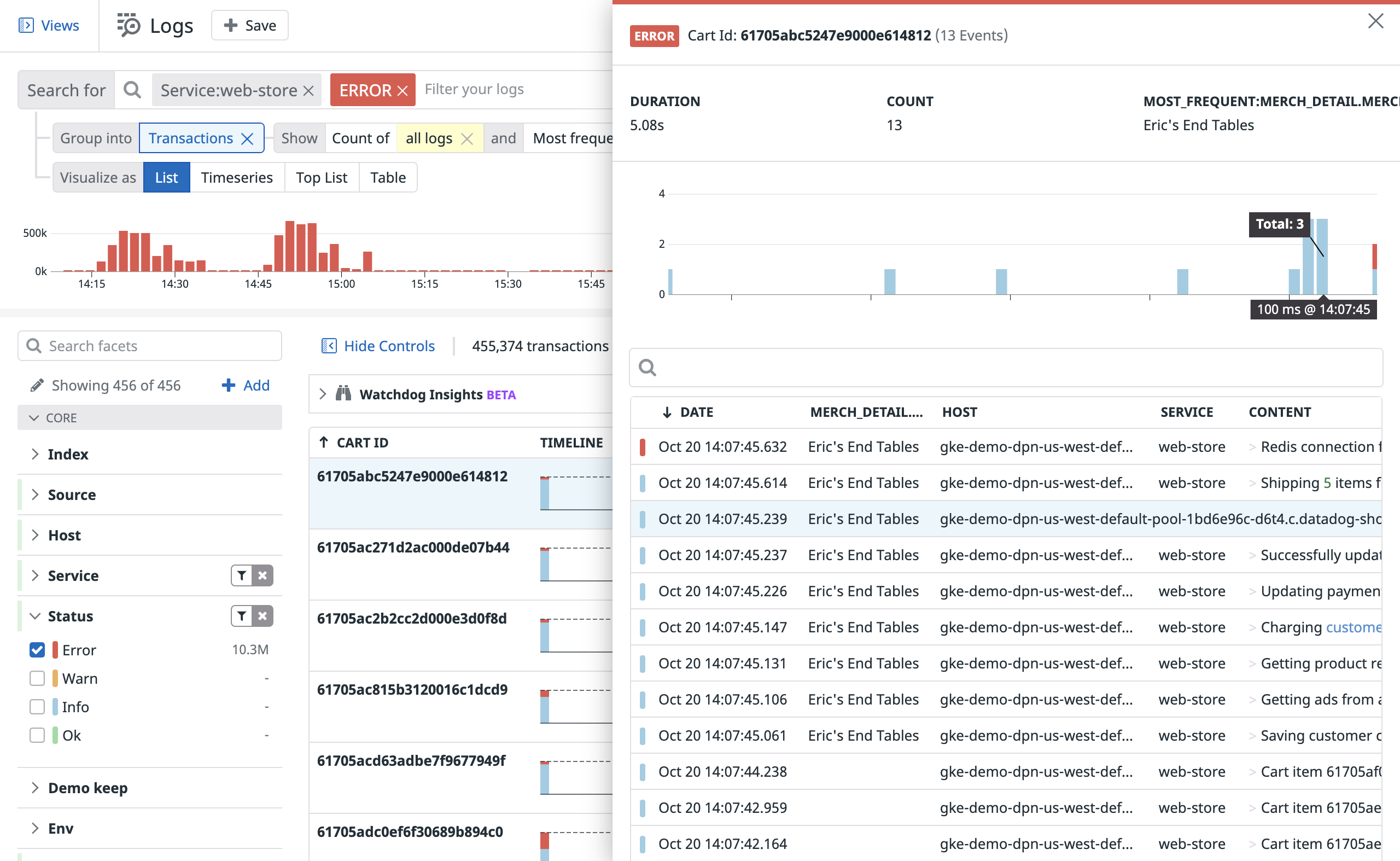- Essentials
- Getting Started
- Agent
- API
- APM Tracing
- Containers
- Dashboards
- Database Monitoring
- Datadog
- Datadog Site
- DevSecOps
- Incident Management
- Integrations
- Internal Developer Portal
- Logs
- Monitors
- Notebooks
- OpenTelemetry
- Profiler
- Search
- Session Replay
- Security
- Serverless for AWS Lambda
- Software Delivery
- Synthetic Monitoring and Testing
- Tags
- Workflow Automation
- Learning Center
- Support
- Glossary
- Standard Attributes
- Guides
- Agent
- Integrations
- Developers
- Authorization
- DogStatsD
- Custom Checks
- Integrations
- Build an Integration with Datadog
- Create an Agent-based Integration
- Create an API-based Integration
- Create a Log Pipeline
- Integration Assets Reference
- Build a Marketplace Offering
- Create an Integration Dashboard
- Create a Monitor Template
- Create a Cloud SIEM Detection Rule
- Install Agent Integration Developer Tool
- Service Checks
- IDE Plugins
- Community
- Guides
- OpenTelemetry
- Administrator's Guide
- API
- Partners
- Datadog Mobile App
- DDSQL Reference
- CoScreen
- CoTerm
- Remote Configuration
- Cloudcraft (Standalone)
- In The App
- Dashboards
- Notebooks
- DDSQL Editor
- Reference Tables
- Sheets
- Monitors and Alerting
- Service Level Objectives
- Metrics
- Watchdog
- Bits AI
- Internal Developer Portal
- Error Tracking
- Change Tracking
- Event Management
- Incident Response
- Actions & Remediations
- Infrastructure
- Cloudcraft
- Resource Catalog
- Universal Service Monitoring
- End User Device Monitoring
- Hosts
- Containers
- Processes
- Serverless
- Network Monitoring
- Storage Management
- Cloud Cost
- Application Performance
- APM
- Continuous Profiler
- Database Monitoring
- Agent Integration Overhead
- Setup Architectures
- Setting Up Postgres
- Setting Up MySQL
- Setting Up SQL Server
- Setting Up Oracle
- Setting Up Amazon DocumentDB
- Setting Up MongoDB
- Connecting DBM and Traces
- Data Collected
- Exploring Database Hosts
- Exploring Query Metrics
- Exploring Query Samples
- Exploring Database Schemas
- Exploring Recommendations
- Troubleshooting
- Guides
- Data Streams Monitoring
- Data Jobs Monitoring
- Data Observability
- Digital Experience
- Real User Monitoring
- Synthetic Testing and Monitoring
- Continuous Testing
- Product Analytics
- Session Replay
- Software Delivery
- CI Visibility
- CD Visibility
- Deployment Gates
- Test Optimization
- Code Coverage
- PR Gates
- DORA Metrics
- Feature Flags
- Security
- Security Overview
- Cloud SIEM
- Code Security
- Cloud Security
- App and API Protection
- Workload Protection
- Sensitive Data Scanner
- AI Observability
- Log Management
- Administration
Grouping Logs Into Transactions
Overview
Transactions aggregate indexed logs according to instances of a sequence of events, such as a user session or a request processed across multiple microservices.
The transaction aggregation differs from the natural group aggregation, in the sense that resulting aggregates not only include logs matching the query, but also all logs belonging to the related transactions.
You can use the following information about transactions to customize your search query:
- Duration
- The difference of timestamps for the last and first log in the transaction. This measure is automatically added.
- Maximum Severity
- Found in logs in the transaction. This measure is automatically added.
- Find Key Items
- For any
facetwith string values, calculate specific log information using thecount unique,latest,earliest, andmost frequentoperations. - Get Statistics
- For any
measure, calculate statistical information using themin,max,avg,sum,median,pc75,pc90,pc95, andpc99operations. - Set Start And End Conditions
- Customize transaction boundaries by specifying the start and end of the transaction using distinct queries.
For example, an e-commerce website groups logs across various user actions, such as catalog search, add to cart, and checkout, to build a Transactions view using a common attribute such as requestId or orderId.
Transactions support the List Aggregates visualization. Clicking a transaction in the list opens the transaction side panel from which you can:
- Access all logs within that transaction
- Search specific logs within that transaction
When a start or end condition is used to define a transaction, click on a transaction group in the list to open the transaction group side panel, from which you can:
- Access the transactions within that transaction group in sequence
- Access all logs within each transaction
- View statistics for each transaction and summary statistics for the entire transaction group
Further reading
Additional helpful documentation, links, and articles:



